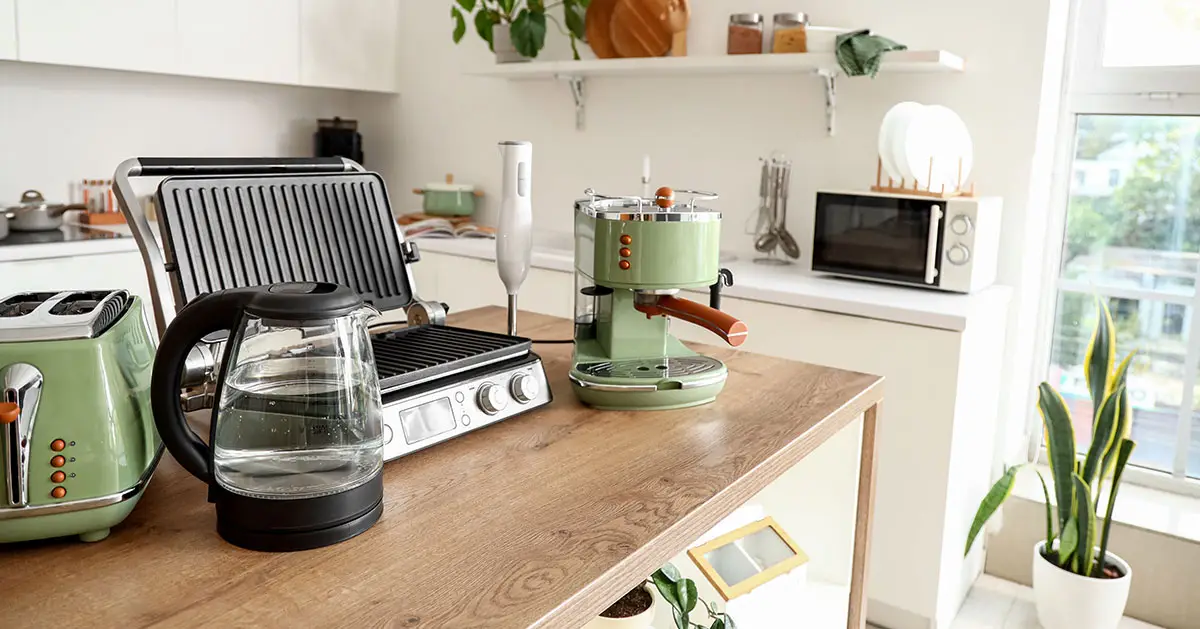The shocking truth
Ever wondered why your trusty fridge suddenly stops humming or why your high-end TV flickers into oblivion? It’s probably not haunted… The culprit could be a power surge. In a world where loadshedding and unpredictable power supply have become a norm, protecting your appliances should be as crucial as insuring your car or home.
A power surge is a sudden spike in electrical voltage that can damage or destroy electronic components in household appliances. This can lead to expensive repairs or replacements, which can seriously dent your budget. Thankfully, there are ways to prevent power surges and protect your valuable appliances from unnecessary damage.
What causes power surges?
Power surges happen when there’s a sudden spike in electrical voltage. This can occur due to:
- Loadshedding: When the power is switched off and then suddenly comes back on, it can send a jolt of electricity through your wiring.
- Lightning strikes: A bolt of lightning hitting a power line can cause a surge that spreads through electrical systems.
- Faulty wiring: Old or poorly maintained wiring can result in irregular voltage supply, damaging appliances over time.
- High-powered electrical devices: Appliances like refrigerators and air conditioners can create surges when they cycle on and off.
- Power grid switching: When the electrical provider switches between different power sources, it can sometimes lead to an unstable voltage supply.
The best way to shield your appliances
The best way to prevent surge damage is by installing a surge protection device (SPD) on your home’s electrical distribution board (DB). Think of it as a knight’s shield against unwanted voltage spikes.
Why DB surge protection is a game-changer
Unlike plug-in adaptors that protect individual appliances, a DB surge protector shields everything that’s plugged into your home’s electrical system. Here’s why it’s a must-have:
- Cost-effectiveness: 1 device protects all your appliances instead of buying multiple adapters.
- Convenience: It’s always on, meaning you don’t have to remember to switch anything on or off.
- Long-term appliance health: Prevents cumulative damage that weakens electronics over time.
When choosing an SPD, ensure it’s SABS-approved and installed by a qualified electrician who can provide a certificate of compliance. This ensures your protection is up to standard and reduces the risk of any dodgy DIY disasters.
Additional ways to protect your appliances
While a DB surge protector is the gold standard, there are additional ways to protect your appliances:
1. Use uninterruptible power supply (UPS) systems
A UPS provides short-term backup power and protects your devices from sudden power loss. This is ideal for computers, Wi-Fi routers, and home office setups that need uninterrupted power.
2. Invest in quality power strips with surge protection
Not all power strips are created equal! Make sure you buy power strips that specifically include surge protection. These offer individual protection for sensitive electronics like TVs, gaming consoles, and kitchen appliances.
3. Unplug appliances during storms
When there’s a lightning storm, unplugging devices can prevent damage from sudden voltage spikes. While this might not be practical for every appliance, it’s a simple and effective way to safeguard high-value electronics.
4. Regularly inspect your home’s wiring
If your home has old or faulty wiring, power surges can happen more frequently. Get a professional electrician to inspect and upgrade your wiring if necessary.
5. Avoid overloading circuits
Plugging too many appliances into a single outlet or extension cord can cause fluctuations in voltage. Use dedicated outlets for high-power appliances like fridges and air conditioners.
Does insurance cover power surge damage?
Most insurers (including King Price) don’t cover grid interruptions. However, King Price clients have the option of adding cover for power surge damage due to loadshedding. This means that if a surge damages your appliances due to an external electrical issue, you could be covered.
To be sure, check your policy schedule or contact King Price to confirm if your home contents policy includes surge protection.
The royal wrap-up
Power surges are sneaky destroyers of home appliances, but the right surge protection can save you thousands. Investing in a DB surge protector, UPS, and high-quality surge-protected power strips will keep your appliances safe from unexpected voltage spikes.
If you want to ensure that your gadgets remain safe from all sorts of risks, make sure your home contents insurance is up to date. Need more info? Call the king of insurance today!
FAQs
1. How does a power surge damage appliances?
A power surge sends a sudden spike of electricity through your home’s wiring, which can fry circuits and electronic components inside appliances, leading to permanent damage or failure.
2. What is the best way to protect my appliances from loadshedding related surges?
Installing a DB surge protector is the best overall protection. Additionally, using UPS systems and surge-protected power strips for sensitive electronics can provide extra safeguards.
3. Do surge protectors wear out over time?
Yes! Surge protectors degrade with every voltage spike they absorb. It’s a good idea to replace them every few years or after a significant surge event.
4. Will my insurance cover appliances damaged by a power surge?
Standard home contents insurance often excludes grid interruptions, but King Price allows clients to add optional cover for power surge damage due to loadshedding. Check your policy to ensure you’re covered.
5. Can I install a DB surge protector myself?
No, a qualified electrician must install a DB surge protector to ensure it meets safety standards and complies with South African electrical regulations.
